#Pest Control Tools
Explore tagged Tumblr posts
Text
EFT Drone Official Store September Golden Autumn Sale
Offer 1: All original drone frame spare parts are 20% off.
Offer 2: Enjoy 20% off on all drone frames, buy 10 sets of drone frames and get one free.
Optional drone frame models: four-axis, six-axis, 0-30kg multiple loads and multiple models are available.
EP series: EFT E410P, EFT E416P, EFT E420P, EFT E610P, EFT E616P, EFT E620P
G series: EFT G06, EFT G20, EFT G20Q, EFT G410, EFT G610, EFT G616, EFT G420, EFT G620, EFT G630
X series: EFT X6100, EFT X6120
Offer 3: Enjoy 20% off on spreaders and spreader sets, buy 10 sets and get one free.
Optional spreader models: EPS200pro, EPS220, EPS240, EPS250, EPS270
EFT official manufacturer, the biggest discount of the year, all products are guaranteed to be authentic and original, and they are in stock and shipped quickly~ Come and buy now:https://www.store.effort-tech.com

#drone news#drone offer#eft drone official store#drone factory#agriculture drone#Pest Control Tools#spraying drone#Fumigation drone#Pesticide spraying drone#agricultural drone eft#farming drone#drones agricola puvirisador#대형 농업용드론#EFT Drone Discounts#drone spare parts
0 notes
Text
Learn about the health benefits of gardening
#GardeningVibes#Gardening#Horticulture#Landscaping#Plants#Flowers#Vegetables#Garden Design#Organic Gardening#Soil Care#Garden Tools#Watering Techniques#Pest Control#Composting#Pruning#Seasonal Planting
2 notes
·
View notes
Text
Nearly Natural 48-in Artificial Boston Fern, Set of 2, Large Hanging Fake Plant Wall Decor with 67 Fronds, Faux Fern Vines that Look Real for Home and Office Decor
Price: (as of – Details) Bring nature indoors with a soft, cascading touch! This Boston Fern features gracefully arching fronds that spread out 48″, showcasing the intricate pinnates for a lush, textured look. Overflowing with tiny evergreen leaves, it creates a full, vibrant display that complements any décor style. Perfect for placing on high shelves, in a hanging basket, or styled together…
#Bonsai trees#fake plants#Garden tools#Grow lights#Mulch#Neem oil#Outdoor plants#Pest control for plants#Plant fertilizer#Succulents#Weeding tools
0 notes
Text
Safaricom & NGO Launch FarmerAI Solutions to Revolutionize Kenyan Agriculture
Safaricom PLC and Opportunity International, a global non-governmental organization, have developed FarmerAI in Kenya, an innovative AI chatbot that will provide smallholder farmers in underserved communities with real-time, relevant farming best practices. As per a 2022 report from the Kenya National Bureau of Statistics (KNBS), the agricultural sector contributes roughly 22.4% to the country’s…
#agricultural development#Agricultural Innovation#agricultural productivity#AI chatbot#AI farming solutions#AI for farmers#AI in agriculture#Crop management#digifarm#digital divide#digital farming tools#FarmerAI#farming best practices.#Farming technology#Food security#Kenya agriculture technology#Kenyan agriculture#kenyan farmers#market prices#NGO#Opportunity International#pest control#rural farmers#safaricom#smallholder farmers#sustainable farming#weather forecasting
0 notes
Text
Revolutionize Termite Detection with Thermo Elite’s Advanced Thermal Imaging Solutions
Termites are a silent menace, often causing significant damage to properties before their presence is even detected. Traditional inspection methods can be invasive and time-consuming, but with the best thermal imaging cameras for termite detection, Thermo Elite offers a non-invasive and highly accurate solution.

Why Choose Thermal Imaging for Termite Detection?
Thermal imaging technology detects the heat signatures emitted by termite activity, allowing inspectors to locate infestations hidden behind walls, floors, and ceilings without the need for destructive testing.
Key Benefits of Thermal Imaging for Termite Detection:
Non-Invasive Inspections: No need to drill holes or remove structures.
Early Detection: Identify termite activity before it causes severe damage.
Precision and Accuracy: Pinpoint the exact location of termite nests and colonies.
Cost-Efficiency: Save money by addressing infestations early and avoiding extensive repairs.
Thermo Elite: Your Partner in Termite Detection
At Thermo Elite, we combine industry-leading technology with professional expertise to deliver the most effective termite detection services. Using state-of-the-art thermal imaging cameras, we ensure that no termite goes unnoticed.
Our Process:
Conduct a thorough scan of your property using thermal imaging cameras.
Identify areas of concern, including heat signatures associated with termite activity.
Provide detailed reports with thermal images and recommendations for next steps.
Applications for Thermal Imaging Termite Detection:
Residential properties.
Commercial buildings.
Pre-purchase property inspections.
Ongoing building maintenance.
Why Thermo Elite Stands Out:
Certified Experts: Our technicians are highly trained in thermal imaging and pest detection.
Innovative Technology: We use the latest thermal imaging cameras for precise results.
Customer Focused: We prioritize your satisfaction with fast, reliable, and effective services.
Protect Your Property Today
Don’t let termites compromise the safety of your property. With Thermo Elite’s best thermal imaging camera for termite detection, you can take a proactive approach to protecting your investment.
#Best Thermal Imaging Camera#Termite Detection Solutions#Non-Invasive Termite Inspection#Thermo Elite Services#Infrared Termite Detection#Thermal Imaging for Termites#Advanced Pest Detection#Residential Termite Inspection#Commercial Termite Solutions#Building Safety Inspection#Early Termite Detection#Prevent Property Damage#Eco-Friendly Pest Control#Thermal Imaging Technology#Innovative Pest Inspection Tools
0 notes
Text
Pest Control Services
Westchester Gutter Cleaning offers comprehensive and eco-friendly pest control services, ensuring a safe and pest-free environment for homeowners. From rodents and termites to mosquitoes and bed bugs, their customized treatment plans cover a wide range of pests to address current infestations and prevent future ones. Their services, which include humane wildlife removal and preventative measures, are designed to protect both indoor and outdoor spaces without harming the environment or posing risks to pets and children. With over 20 years of experience, Westchester Gutter Cleaning guarantees effective pest control with outstanding customer service, backed by a satisfaction guarantee.
#gutter services#gutter tools#gutter maintenance#gutter cleaning#gutter installation#westchester manhattan gutter cleaning#Pest Control
0 notes
Text
#Housecall Pro#Home service business#Field service management#Home service software#Business management software#scheduling software#dispatch software#invoicing software#customer management software#marketing automation#reporting tools#home service industry#business growth#field service technicians#home service professionals#Cleaners#HVAC#Plumbers#Roofers#Electricians#Handyman#Custom Remodeling#General Contractors#Garage Door professionals#Fireplace and Chimney professionals#Pest Control professionals#Pool and Spa professionals#Landscaping and Lawn professionals#Carpet Cleaning professionals#Window Cleaning professionals
0 notes
Text
Organic Pest Control 101: Protect Your Garden from Insects and Diseases

Tired of losing plants to insects and diseases? Get tips to protect your garden safely and naturally without pesticides! Cultural methods, homemade remedies, companion planting, beneficial biodiversity, and more explained. Garden better using integrated pest management (IPM)!
#pestcontrol#pest insects#pest control#gardening tools#gardening tips#yardener#gardening tumblr#gardeningcommunity
0 notes
Text
Best Gardening Tools You Must Have
1. Manual High Pressure Air Pump Sprayer



Introducing our Manual High Pressure Air Pump Sprayer, now at an incredible 55% off! Get yours for only $2.41 with free shipping. Crafted from durable ABS plastic, this 29x3x4cm sprayer is your ideal tool for garden watering and cleaning. The trigger sprayer offers both water mist and stream options, customizable to your preferences. Its 30cm pipe ensures easy reach, and it conveniently fits standard plastic beverage bottles, making it simple to connect and operate. Elevate your watering and cleaning tasks today – click to buy now!
https://s.click.aliexpress.com/e/_DkfFR47
2. 2.6m Retractable Spraying Rod

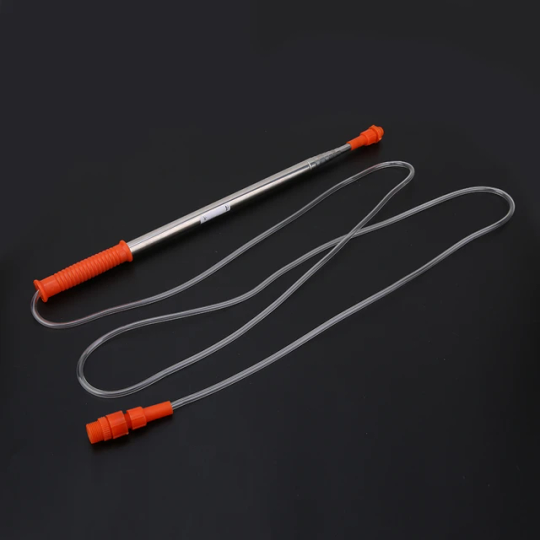
Introducing 2.6m Retractable Spraying Rod – the perfect tool for your spraying needs! Enjoy an incredible 36% off, slashing the price to just $8.42. With 14-day delivery, you won't have to wait long to get started. And guess what? Shipping is free for orders over $5.00! Crafted with care from durable plastic PP and high-quality stainless steel, this sprayer is built to withstand the test of time and resist corrosion. The retractable design makes it effortlessly convenient, while its superior craftsmanship ensures a long service life. Portable and easy to carry, this sprayer is your go-to companion for any spraying task. Don't miss out – seize the deal now!
https://s.click.aliexpress.com/e/_DntapRh
3. 2L/3L Pumped Pressure Sprayer

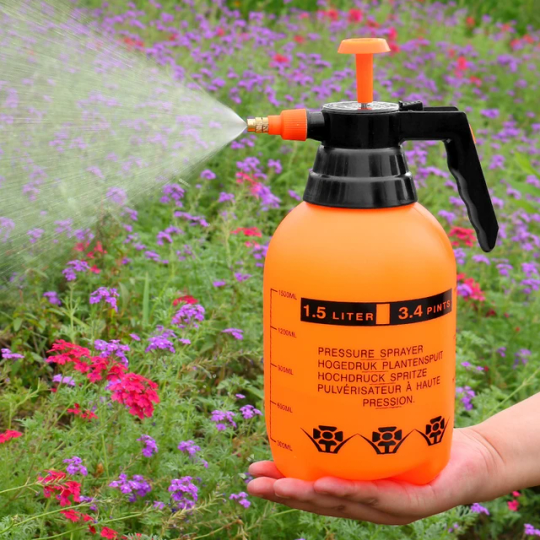
Introducing 2L/3L Pumped Pressure Sprayer – your ultimate solution for versatile cleaning, disinfection, and watering needs. Enjoy a fantastic 15% discount, bringing the price down to just $1.77! With a sturdy plastic PE construction, this sprayer is built to last. The adjustable features allow you to switch from a single jet to a fine mist, catering to your specific requirements. Crafted with a copper nozzle, the sprayer ensures optimal performance. The strong pump handle guarantees safe and convenient operation, and the automatic water spray lock switch adds extra ease. Rest assured with 75-day Buyer Protection. Don't miss out – upgrade your cleaning and watering experience today!
https://s.click.aliexpress.com/e/_DkFaz0T
#garden#garden tools#sprayer#watering#high pressure cleaning#pest control#disinfection#cleaning#gardening
0 notes
Text
City bat monitoring program aims to explore natural pest control
The easiest way to find a bat roosting site is to look for traces of guano — or bat droppings — underneath a bridge. Especially during the summer period when bats are raising their pups. The City of Edmonton is undertaking this work with a new bat monitoring program this year. It’s the first time the city has done an official assessment of what bats are in the city, and where. Initiated due to a…

View On WordPress
#&010;&010;new#explore#aims#bật#city#control#featured#financial#Investing#money#monitoring#natural#news#pest#program#reviews#talk#Tools
0 notes
Text
Canada’s ground-breaking, hamstrung repair and interop laws

If you'd like an essay-formatted version of this post to read or share, here's a link to it on pluralistic.net, my surveillance-free, ad-free, tracker-free blog:
https://pluralistic.net/2024/11/15/radical-extremists/#sex-pest

When the GOP trifecta assumes power in just a few months, they will pass laws, and those laws will be terrible, and they will cast long, long shadows.
This is the story of how another far-right conservative government used its bulletproof majority to pass a wildly unpopular law that continues to stymie progress to this day. It's the story of Canada's Harper Conservative government, and two of its key ministers: Tony Clement and James Moore.
Starting in 1998, the US Trade Rep embarked on a long campaign to force every country in the world to enact a new kind of IP law: an "anticircumvention" law that would criminalize the production and use of tools that allowed people to use their own property in ways that the manufacturer disliked.
This first entered the US statute books with the 1998 passage of the Digital Millennium Copyright Act (DMCA), whose Section 1201 established a new felony for circumventing an "access control." Crucially, DMCA 1201's prohibition on circumvention did not confine itself to protecting copyright.
Circumventing an access control is a felony, even if you never violate copyright law. For example, if you circumvent the access control on your own printer to disable the processes that check to make sure you're using an official HP cartridge, HP can come after you.
You haven't violated any copyright, but the ink-checking code is a copyrighted work, and you had to circumvent a block in order to reach it. Thus, if I provide you a tool to escape HP's ink racket, I commit a felony with penalties of five years in prison and a $500k fine, for a first offense. So it is that HP ink costs more per ounce than the semen of a Kentucky Derby-winning stallion.
This was clearly a bad idea in 1998, though it wasn't clear how bad an idea it was at the time. In 1998, chips were expensive and underpowered. By 2010, a chip that cost less than a dollar could easily implement a DMCA-triggering access control, and manufacturers of all kinds were adding superfluous chips to everything from engine parts to smart lightbulbs whose sole purpose was to transform modification into felonies. This is what Jay Freeman calls "felony contempt of business-model."
So when the Harper government set out to import US-style anticircumvention law to Canada, Canadians were furious. A consultation on the proposal received 6,138 responses opposing the law, and 54 in support:
https://www.michaelgeist.ca/2010/04/copycon-final-numbers/
And yet, James Moore and Tony Clement pressed on. When asked how they could advance such an unpopular bill, opposed by experts and the general public alike, Moore told the International Chamber of Commerce that every objector who responded to his consultation was a "radical extremist" with a "babyish" approach to copyright:
https://www.cbc.ca/news/science/copyright-debate-turns-ugly-1.898216
As is so often the case, history vindicated the babyish radical extremists. The DMCA actually has an official way to keep score on this one. Every three years, the US Copyright Office invites public submissions for exemptions to DMCA 1201, creating a detailed, evidence-backed record of all the legitimate activities that anticircumvention law interferes with.
Unfortunately, "a record" is all we get out of this proceeding. Even though the Copyright Office is allowed to grant "exemptions," these don't mean what you think they mean. The statute is very clear on this: the US Copyright Office is required to grant exemptions for the act of circumvention, but is forbidden from granting exemptions for tools needed to carry out these acts.
This is headspinningly and deliberately obscure, but there's one anecdote from my long crusade against this stupid law that lays it bare. As I mentioned, the US Trade Rep has made the passage of DMCA-like laws in other countries a top priority since the Clinton years. In 2001, the EU adopted the EU Copyright Directive, whose Article 6 copy-pastes the provisions of DMCA 1201.
In 2003, I found myself in Oslo, debating the minister who'd just completed Norway's EUCD implementation. The minister was very proud of his law, boasting that he'd researched the flaws in other countries' anticircumvention laws and addressed them in Norway's law. For example, Norway's law explicitly allowed blind people to bypass access controls on ebooks in order to feed them into text-to-speech engines, Braille printers and other accessibility tools.
I knew where this was going. I asked the minister how this would work in practice. Could someone sell a blind person a tool to break the DRM on their ebooks? Of course not, that's totally illegal. Could a nonprofit blind rights group make such a tool and give it away to blind people? No, that's illegal too. What about hobbyists, could they make the tool for their blind friends? No, not that either.
OK, so how do blind people exercise their right to bypass access controls on ebooks they own so they can actually read them?
Here's how. Each blind person, all by themself, is expected to decompile and reverse-engineer Adobe Reader, locate a vulnerability in the code and write a new program that exploits that vulnerability to extract their ebooks. While blind people are individually empowered to undertake this otherwise prohibited activity, they must do so on their own: they can't share notes with one another on the process. They certainly can't give each other the circumvention program they write in this way:
https://pluralistic.net/2024/10/28/mcbroken/#my-milkshake-brings-all-the-lawyers-to-the-yard
That's what a use-only exemption is: the right to individually put a locked down device up on your own workbench, and, laboring in perfect secrecy, figure out how it works and then defeat the locks that stop you from changing those workings so they benefit you instead of the manufacturer. Without a "tools" exemption, a use exemption is basically a decorative ornament.
So the many use exemptions that the US Copyright Office has granted since 1998 really amount to nothing more than a list of defects in the DMCA that the Copyright Office has painstaking verified but is powerless to fix. We could probably save everyone a lot of time by scrapping the triennial exemptions process and replacing it with an permanent sign over the doors of the Library of Congress reading "Abandon hope, all ye who enter here."
All of this was well understood by 2010, when Moore and Clement were working on the Canadian version of the DMCA. All of this was explained in eye-watering detail to Moore and Clement, but was roundly ignored. I even had a go at it, publicly picking a fight with Moore on Twitter:
https://web.archive.org/web/20130407101911if_/http://eaves.ca/wp-content/uploads/2010/Conversations%20between%20@doctorow%20and%[email protected]
Moore and Clement rammed their proposal through in the next session of Parliament, passing it as Bill C-11 in 2012:
https://en.wikipedia.org/wiki/Copyright_Modernization_Act
This was something of a grand finale for the pair. Today, Moore is a faceless corporate lawyer, while Clement was last seen grifting covid PPE (Clement's political career ended abruptly when he sent dick pics to a young woman who turned out to be a pair of sextortionists from Cote D'Ivoire, and was revealed as a serial sex-pest in the ensuing scandal:)
https://globalnews.ca/news/4646287/tony-clement-instagram-women/
Even though Moore and Clement are long gone from public life, their signature achievement remains a Canadian disgrace, an anchor chain tied around the Canadian economy's throat, and an impediment to Canadian progress.
This week, two excellent new Canadian laws received royal assent: Bill C-244 is a broad, national Right to Repair law; and Bill C-294 is a broad, national interoperability law. Both laws establish the right to circumvent access controls for the purpose of fixing and improving things, something Canadians deserve and need.
But neither law contains a tools exemption. Like the blind people of Norway, a Canadian farmer who wants to attach a made-in-Canada Honeybee tool to their John Deere tractor is required to personally, individually reverse-engineer the John Deere tractor and modify it to talk to the Honeybee accessory, laboring in total secrecy:
https://www.theregister.com/2024/11/12/canada_right_to_repair/
Likewise the Canadian repair tech who fixes a smart speaker or a busted smartphone – they are legally permitted to circumvent in order to torture the device's repair codes out of it or force it to recognize a replacement part, but each technician must personally figure out how to get the device firmware to do this, without discussing it with anyone else.
Thus do Moore and Clement stand athwart Canadian self-reliance and economic development, shouting "STOP!" though both men have been out of politics for years.
There has never been a better time to hit Clement and Moore's political legacy over the head with a shovel and bury it in a shallow grave. Canadian technologists could be making a fortune creating circumvention devices that repair and improve devices marketed by foreign companies.
They could make circumvention tools to allow owners of consoles to play games by Canadian studios that are directly sold to Canadian gamers, bypassing the stores operated by Microsoft, Sony and Nintendo and the 30% commissions they charge. Canadian technologists could be making diagnostic tools that allow every auto-mechanic in Canada to fix any car manufactured anywhere in the world.
Canadian cloud servers could power devices long after their US-based manufacturers discontinue support for them, providing income to Canadian cloud companies and continued enjoyment for Canadian owners of these otherwise bricked gadgets.
Canada's gigantic auto-parts sector could clone the security chips that foreign auto manufacturers use to block the use of third party parts, and every Canadian could enjoy a steep discount every time they fix their cars. Every farmer could avail themselves of third party parts for their tractors, which they could install themselves, bypassing the $200 service call from a John Deere technician who does nothing more than look over the farmer's own repair and then types an unlock code into the tractor's console.
Every Canadian who prints out a shopping list or their kid's homework could use third party ink that sells for pennies per liter, rather than HP's official colored water that cost more than vintage Veuve Cliquot.
A Canadian e-waste dump generates five low-paid jobs per ton of waste, and that waste itself will poison the land and water for centuries to come. A circumvention-enabled Canadian repair sector could generate 150 skilled, high-paid community jobs that saves gadgets and the Earth, all while saving Canadians millions.
Canadians could enjoy the resliency that comes of having a domestic tech and repair sector, and could count on it through pandemics and Trumpian trade-war.
All of that and more could be ours, except for the cowardice and greed of Tony Clement and James Moore and the Harper Tories who voted C-11 into law in 2012.
Everything the "radical extremists" warned them of has come true. It's long past time Canadians tore up anticircumvention law and put the interests of the Canadian public and Canadian tech businesses ahead of the rent-seeking enshittification of American Big Tech.
Until we do that, we can keep on passing all the repair and interop laws we want, but each one will be hamstrung by Moore and Clement's "felony contempt of business model" law, and the contempt it showed for the Canadian people.

Image: JeffJ (modified) https://en.wikipedia.org/wiki/File:Tony_Clement_-_2007-06-30_in_Kearney,_Ontario.JPG
CC BY-SA 3.0 https://creativecommons.org/licenses/by-sa/3.0/
--
Jorge Franganillo (modified) https://commons.wikimedia.org/wiki/File:Duga_radar_system-_wreckage_of_electronic_devices_(37885984654).jpg
CC BY 2.0 https://creativecommons.org/licenses/by/2.0/deed.en
#pluralistic#o canada#canada#cdnpoli#bill c32#anticircumvention#interoperability#trumpism#technological self-determination#c32#bill c244#bill c294#c244#c294#interop#repair#r2r#right to repair#tools exemptions#use exemptions#trade war#economic development
537 notes
·
View notes
Text
Alright, here's my dream Stardew Valley style game, designed for my own tastes.
You come to a small town with the usual twenty to thirty people. It's in the middle of nowhere. It's a fantasy town, and no one actually farms anymore, partly because it's only questionably profitable, partly because a lot of the knowledge has been lost. Instead, everyone uses these magic doodads which are very powerful but also very limited. The tavernkeeper has a doodad that makes him a single kind of weak ale and a single variety of off-tasting wine. The clothier has basically a square mile of linen to work with, and everyone wears her drab clothes. Tools are made from a doodad that the blacksmith owns, not even made of any actual metal, just a material that wears away after a month and needs to be replaced by a new copy from the blacksmith's doodad. People get their meals from the doodads. They get their medical checkups. It's all a bit shit.
Because I'm a worldbuilder at heart, I would have this all exist in the wake of a large-scale war that depleted the town of its fighting-age population, with the doodads being a sort of government program to ensure that more of the lifeblood of the town could be drained away. And for there to be some reason for the town to continue existing, perhaps the government is harvesting some resources necessary in the creation of doodads. That's enough for a pro-doodad faction and maybe some minor drama with them, though I do like the idea that the only reason things are Like This is because there was a war and things got bad. It's not necessarily a bleak town, but there's definitely a listlessness to it, a "what's the point".
So you're a farmer, but no one is really a farmer anymore. Maybe there are a few books, but you don't learn farming from books, you learn it from practical experience; that's a lot of what this game is about. When you start, there's no one to buy seeds from, there's just a bunch of wilderness where farms once stood, now all long overgrown.
So you go out and forage, for a start, and you clear the land, and you pay attention to the plants and how they can be used, and you start in on making recipes with them, maybe with the help of your grandfather's old, partially incomplete books. You find some wild corn that's a descendant of the old times. You find some tomato seeds in an urn. You discover potatoes because you see them dug up by a wild boar, which itself was once a domesticated animal.
In my ideal game, you need to pay attention to the soil quality, to how far apart things are planted, to what crops work well together. Farming is a matter of companion planting and polycultures. You get some chickens by giving them consistent feed, and you keep them around because they're natural pest control. Your climbing beans climb the stalks of your maize. You're attracting pollinators. (From a gameplay perspective, yeah, we probably put this all into a grid, and you have crop bonuses from adjacencies, and emergent gameplay that comes from all that, some plants providing shade, others providing nitrogen fixing.) You're a scientist making observations about the plants, maybe with your incomplete book giving you confirmation on the nature of all your crops once you hit certain production goals or a perfect specimen or whatever.
Cooking is the same. There has got to be a system that I like better than just "combine tomato with bread to get tomato bread". I'm pretty sure that it's some variant of the actual process I use when cooking, which is making sure that things are properly cooked, balancing flavors against each other, adding in a little salt or acidity or umami or whatever. Time in the kitchen, in this game, is often about making meals, ensuring that if you have a fatty piece of meat you have some asparagus that's coated with lemon to go with it. (From a gameplay perspective, I think building the dish once is probably sufficient and it can be automated after that, and building the meal is the same. I don't want to play this minigame every time I'm cooking a dish, I just want to play it a single time until I have good knowledge of the best way to grill a BBQ chicken breast with a homemade sauce.)
But if we're having a little minigame here where we pay attention to how long we're cooking the kale to make sure that it's the right texture, and we're paying attention to abstractified mouthfeel and palette, then we can get something else for free: variation. See, you're not just cooking to get an S grade, you're cooking for people with different tastes. The cobbler has a sweet tooth, the librarian loves fruity things, the mayor cannot stand fish, that sort of thing. From a gameplay perspective, maybe we represent this with a radar graph with some specific favorite and least favorite individual flavors, and maybe it's visible to the player, but the important thing is that player gets feedback and have a reason to strive for both "good" and "perfection" and some of this is going to depend on the quality of the ingredients.
And this is, gradually, how the town is brought back into the fullness of life. You're not just cooking for these people, you're also selling them food, and they're making their own recipes, and all the stuff that's not food is making their businesses not suck anymore. After the first test keg of ale goes swimmingly, the tavernkeeper wants more, a lot more, and puts in an order for hops, wheat, grapes, anything he can use to make things that will improve nights at the tavern. The clothier will skeptically take in wool and spin her own yarn, and then eagerly want more, because how awesome is it to have a new textile? There's a chemist who is extremely interested in dyes and paints, and wants you to bring him all kinds of things to see what might be viable for going beyond the ~3 colors that the doodads can provide.
So by year two, if you're doing things right, you're the lynchpin of the revivalist movement. People are now moving to the town, for the first time in decades, because they hear that you're there and doing interesting things with the wilderness. Maybe there are other farmers following in your wake, but maybe it's just new characters who are specifically coming because a crate of wine was shipped to the capital city. Maybe some of them bring new techniques for you, or a handful of plants from a botanical garden, and there are new elements for the minigames, or maybe some automation for the stuff that's old hat.
I think something that's important to me is that there's a reason for the crops you plant and the things you do. I always like these games best when it feels like I'm doing something for someone, when I can look at a plot of cabbages and think "ah, those are the cabbages I owe to Leon". Where these games are at their worst, everything is entirely fungible and I've planted eight million blueberries because they have the highest ROI.
And yeah, in most of these games, there are other minigames like fishing and mining and logging and crafting, and since this is just a blog post and not a game, I definitely could massively expand an already sizeable scope.
I think for mining the player would use doodads of their own, and maybe you could make a mining minigame out of that, using the same planting tile system to instead create an automated ore harvesting machine that plumbs the depths of the earth (possibly dealing with rocks of different hardness, the water table, and other challenges along the way).
Fishing is a question of understanding the different fish species, what they eat, where they congregate, and then setting nets or lines, since I have never met a fishing minigame I really enjoyed. Again, there's some idea that the player is gaining information over time, building up a profile of these fish, noticing that some of them go nuts when it rains, understanding the spawning season, that they go to deeper water when it's cold, etc.
Crafting really depends on what you're crafting, but if you're reintroducing traditional artisan processes to this town, then people are going to need tools and machines and things. I'm not sure I know what a proper crafting game looks like. The only experience I have to draw on is wood shop, where I made wooden boxes, cutting boards, and picture frames. Since this is an engineering-lite puzzle-lite game, you could maybe do something in that vein, e.g. defining a number of steps that get you the correct thing you're trying to make, but ... eh. I love the idea of designing a chicken coop, for example, or building a trellis if I want my climbing beans to not need maize, or whatever, but I don't know how you actually implement that. There are definitely voxel-based and snap-to-grid games where you build bases, and I tend to find that fun ... but it's mostly cosmetic, for the obvious reason that doing it any other way than cosmetic requires programmatic evaluation, which is difficult and maybe unintuitive. The closest I think I've seen is ... maybe Tears of the Kingdom? Contraption building? But I don't know how you translate that to a farming game. Maybe I should ask my wife about this, because she's always doing little projects around the house (an outdoor enclosure for our cats, a 3D-printed holder for our living room keyboard, a mounting for our TV).
Making an interesting crafting system is difficult, which is why pretty much no one has done it.
And if I'm talking pie in the sky, without concern for budget or scope, I want the villagers to all have a mammoth amount of writing for them. I want petty little dramas and weird obsessions, lives that evolve with or without my input, rudimentary dialog trees that let me nudge things in different directions. This is just an unbelievable amount of work on its own, it would be crazy, but I would love having a tiny little town game where sometimes other people would fall in love. I would like to be invited to a wedding, maybe one that happened because I encouraged the chemist to hang out with the clothier, and in the course of working together on dyes, they fell in love. With twenty people in town and another ten that come in over the course of the game if you hit the right triggers, I do think this is just a matter of having a ton of time/budget. You write tons and tons of dialogue so there's not much that's repeated, you have some lines of conversation between characters that are progressed through, you have others that trigger off of events, and then you have personal relationships between NPCs that can be progressed through time or with player intervention. Give single characters a pool of love interests, have their affections depend on their routine which depends on what's changed in town ... very difficult to do without spending loads and loads of time on it though.
Anyway, that's one of my dream games. No one is ever going to make it, it would be a niche of a niche, and as scoped here, is too much for a small team to ever actually finish, let alone polish. But it's the sort of thing I'm imagining in my head when I think about playing Stardew Valley and its successors.
202 notes
·
View notes
Text
How Our Pixie Orange Farm Tour and Training Unfolded in Makueni County
“Discover how our recent Farm Tour and Training in Makueni County empowered farmers with expert advice on pixie orange production, from nursery management to harvesting techniques.” “Our Farm Tour and Training at Aaron Agronomy Services provided hands-on experience in pixie orange farming, offering farmers valuable insights into sustainable farming practices and pest control methods.” After a…
#agricultural inputs#agricultural training#agrochemicals for oranges#agronomist advice#agronomy services#citrus farming#citrus pest control#Crop management#farm productivity#Farm tour and training#farm tours Kenya#farm workshops#farming tools#fruit farming Kenya#fruit market Kenya#grafting techniques#hands-on farming#Kenyan fruit farming.#Makueni County farming#nursery management#orange tree care#Orchard management#pest control in oranges#pixie orange exports#Pixie orange farming#pixie orange harvest#pixie orange profitability#Pixie orange seedlings#pixie orange yield#smallholder farming
0 notes
Text
Discover the Best Thermal Imaging Camera for Termite Detection with Thermo Elite
Termites can silently wreak havoc on your property, causing extensive structural damage before you even realize it. At Thermo Elite, we leverage the best thermal imaging cameras for termite detection, offering non-invasive, accurate solutions to identify infestations early and protect your property.

Why Thermal Imaging is Ideal for Termite Detection
Traditional termite detection methods often involve invasive processes, such as drilling holes or dismantling parts of the structure. However, thermal imaging technology allows us to detect termite activity by identifying subtle temperature changes caused by their movement and nests.
The best thermal imaging cameras used by Thermo Elite provide:
Non-Invasive Inspections: No damage to your property.
Accurate Detection: Identifies termite activity behind walls, floors, and ceilings.
Early Intervention: Helps prevent costly repairs by catching infestations early.
How Thermo Elite’s Thermal Imaging Services Work
Initial Assessment: Our experts inspect the property to determine potential areas of termite activity.
Thermal Imaging Scan: Using state-of-the-art cameras, we capture thermal images to locate infestations.
Detailed Reporting: We provide a comprehensive report with thermal images and recommendations for treatment or prevention.
Benefits of Choosing Thermo Elite for Termite Detection
Expert Technicians: Our team is trained to use thermal imaging for precise and efficient termite detection.
Advanced Technology: We use the best thermal imaging cameras available in the market.
Peace of Mind: Protect your property from hidden termite damage with accurate diagnostics.
Eco-Friendly Solutions: No chemicals or invasive processes required.
Who Can Benefit from Our Services?
Homeowners: Safeguard your home from termites.
Commercial Property Owners: Protect your investments.
Real Estate Professionals: Ensure properties are termite-free before sale or purchase.
#Best Thermal Imaging Camera#Termite Detection Services#Non-Invasive Termite Inspections#Thermo Elite Solutions#Infrared Termite Detection#Thermal Imaging for Pest Control#Termite Inspection Technology#Advanced Termite Detection Tools#Home Termite Protection#Eco-Friendly Termite Solutions#Thermal Imaging Experts#Termite Prevention Services#Building Structural Safety#Accurate Pest Detection#Property Inspection Services
0 notes
Text
Ko-fi prompt from IndigoMay:
What would be the economic impact if people could magically grow whatever food they liked? Including fodder for animals.
This is a very wide-ranging question, like... when was the magic introduced? What was the state of agriculture before that? Is this food generated from existing matter, delivered by gods, or something else?
I'm going to narrow this to:
What would happen if people could, starting tomorrow, grow any plant...
That is edible, by either humans or livestock, with appropriate treatment.
Without delay, meaning that the time sink is several minutes instead of weeks or months.
Without concerns for weather or other natural dangers like fungal infections or pests, or requirements for water or fertilizer.
Without depleting soil nutrients, so long as they have arable land to work with.
Without relying on fresh seeds or other 'raw ingredients' like leaf cuttings.
Well... let's start small.
Personal Basis - people who are not farmers
People who do not normally grow things would start angling to acquire some kind basic gardening implements. For some, like those who live in the suburbs, this would be as simple as going into the backyard. For those in cities, they'd need to get a window box or similar to use. If you have free, guaranteed fresh plant matter, that's already a good thing, but the time and care required to keep a garden alive is more than some people can manage due to work or children or housing. With immediate food that requires minimal effort, a lot of those hurdles are removed. You can grow the two tomatoes you need for dinner, and then put the pot of soil away for tomorrow.
The cost of
Personal Basis - small farmers
The obvious impacts for those who are small farmers is that people are less likely to buy their raw ingredients. Most of these small farmers would start looking into modifying their operations to do things that require processing.
Growing apples in your house for a snack is fine--if you have a pot big enough for a small tree, and a way to dispose of the wood if it's a one-time thing--but if you want applesauce or cider or pie, someone who knows how to cook or bake needs to do that part. You can grow wheat, but your chances of having the necessary tools to grind flour are slim. You can grow cashews, but fuck knows how you're going to process that without poisoning yourself! You can grow grapes on your trellis, but that doesn't mean you have the knowledge to make wine without accidentally going straight to vinegar. You can grow corn, but that doesn't mean you know the best way to dry it to make popcorn.
So small farms shift to those products that either need processing, or are part of an animal-based food. This includes things like flowers for bees. You can't really control bees, so just 'grow and go' might incite the bees to leave somehow. Maybe they can sense magic! Who knows!
Another option would be to focus on unique or heirloom things. If you go to a farmer's market, you might be going just to see all the fruits you've never encountered before. If there's an apple stand one year, and suddenly you can grow your own apples at home, then maybe what they start doing is growing unique or rare cultivars that you've never heard of, and that's their new niche. It's not that you can't grow the apples, but would you grow them if you've never heard of them? Plus, the apple stand is doing sauces and ciders now.
Mid-tier and large farms
These farms will start to focus in on large-scale crops that don't go straight to tables or cooking pots in homes. Scrap the eggplants, the cucumbers, the blueberries. Focus on:
Fruits and vegetables that are needed for popular secondary products, like tomatoes (ketchup, marinara), or oranges (juice), or corn (anything with fructose corn syrups, popcorn).
Plants that are popular but NEED processing to be edible, like coffee beans, cocoa beans, or wheat, that most people just don't have.
Plants that are needed in massive quantities for animal feed, such as alfalfa or chicken grains.
Now, I think these large farms would still be in production. We'd see a massive reduction in water usage, which is great (except for cranberries, I guess), but many of these products would still be needed in quantities that need industrial levels of processing. Someone needs to pick the oranges, to drive them to the juicing facility, the facility needs to juice and treat and preserve and bottle them, and then that needs to be driven to the store. The reduced time to grow, reduced water usage, reduced waste from natural predators or dangers, and general ability to plan things more efficiently would result in lower costs for many of these products in a truly free market... but would possibly also rise in cost as companies try to maintain a consistent flow of profit.
Sure you can make the juice at home, but what if you're already at work? There's still a demand for products; most of us can get water from a tap at home, but there are still convenience stores selling bottled water on every other corner in a big city.
I think the most interesting of these concerns would be grazing animals, like sheep, cattle, and goats. Being able to 'refresh' the grass of a single field without having to rotate the animals to new pastures once they've eaten away at one, and without damaging the nutrient profiles of the one they're staying at, means reduced deforestation or soil destabilization in agricultural areas. We'd see a fairly significant stalling of things like the decimation of Mongolia's grasslands if the goats didn't need as much grazing land.
Maintaining the meat industry would be one of the most constant sources of demand for large-scale agriculture, given that other products could go through cycles to more efficiently use land. You can grow and harvest oranges for Tropicana on Monday, grapes for Welch's on Tuesday, soy beans for Silk on Wednesday, tomatoes for Heinz on Thursday, and so on. They probably won't need more than they used to.
Meanwhile, the cows gotta eat. And eat. And eat.
Corporations
This one is fun! MONSANTO'S GONNA BE PISSED.
So, magically growing food, you don't need seeds, at least in this case. Or you can coax more product out of a seed you already have planted. You've gotten eight cycles corn out of this one stalk this season!
So Monsanto loses some of that insane seed monopoly situation.
You'd see a decrease in pesticides and anti-fungal products as agriculture speeds up a cycle by enough to prevent the spread of dangerous infestations. It's not going to kill your entire farm if you find fungus one day and have to burn it to prevent the spread. You lost one day's profit, not a full year's.
This impacts Monsanto too. Remember the Roundup debacle?
Now, to be clear, there are still plants that will rely on pesticides and anti-fungals. The premise only covers food, after all, so there are still important plants that will need longer, dedicated growing seasons.
Industry-wide shifts
Sooooooooooo a lot of the money starts to come from non-edible plants. This is your cottons, linens, hemps, latex/rubber trees, cork trees, lumber, and so on.
As the needed arable land necessary to feed humanity (and our livestock) decreases, more land is freed up for return to indigenous peoples, reclamation by nature, usage for alternate cultivation, housing, or... well, other capitalist ventures, like bitcoin mining or whatever.
On a geopolitical level, this causes some interesting shifts in places that draw their power from being 'breadbasket' nations. For instance, if you remember the start of the Russo-Ukrainian war, we saw some major pressures being placed by virtue of some countries (e.g. Lebanon, Pakistan) getting most of their wheat from Ukraine, and the war suddenly cutting off a massive portion of how they fed their people. Much of Ukraine's support, in those early days, derived from their importance as a breadbasket nation. If everyone can grown their own food, that moves the lines. Countries that are poor on space or water can stop relying on trade to survive in terms of water. Countries that rely on their agriculture to be able to trade for other things need to diversify their economies, and fast.
(Does mean that Saudi Arabia can stop using Arizona's water, though.)
The greatest shifts would come down to water usage and pollution, I think. Agriculture is currently one of the biggest contributors to the climate crisis, and the reduction of water use by farming would be a massive help. However, I'm less sure of how we'd see meat consumption change. The greater availability of fresh fruits and vegetables could result in a shift towards more plant-based diets worldwide, but just as easily we could see large agricultural corporations (and those that rely on them, like John Deere or the aforementioned Monsanto) market meat to consumers as a greater rate due to the profit margin.
Oh, also, I have a feeling that a lot of those corporations would try to get garden centers shut down, or buy out ceramic pot and planter factories. If you can't grow anything at home because you don't have a window planter, you have to buy from the store, right?
#ko fi#ko-fi#ko fi prompts#phoenix talks#magic#agriculture#microeconomics#macroeconomics#politics#environmentalism#water usage#pollution
115 notes
·
View notes
Text
Kekuelai

Kekuelai are small winged rahi that can reach remarkable flying speeds.
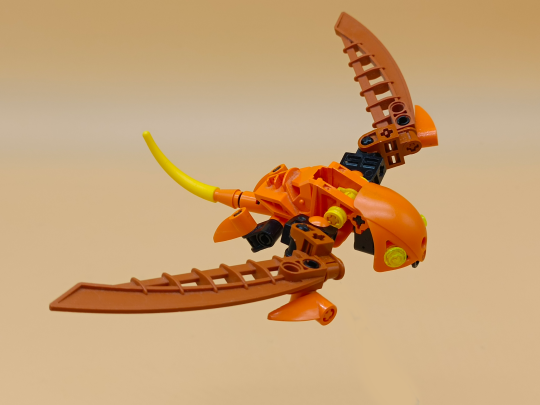

Being insectivores they are also extremely proficient in catching bugs mid-flight, and to any matoran skilled enough to catch and tame one they can become an invaluable tool for pest control.


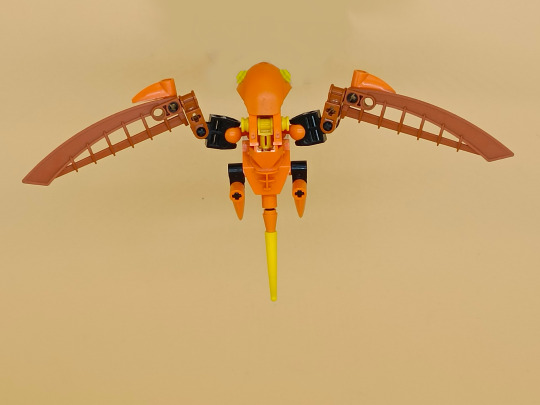
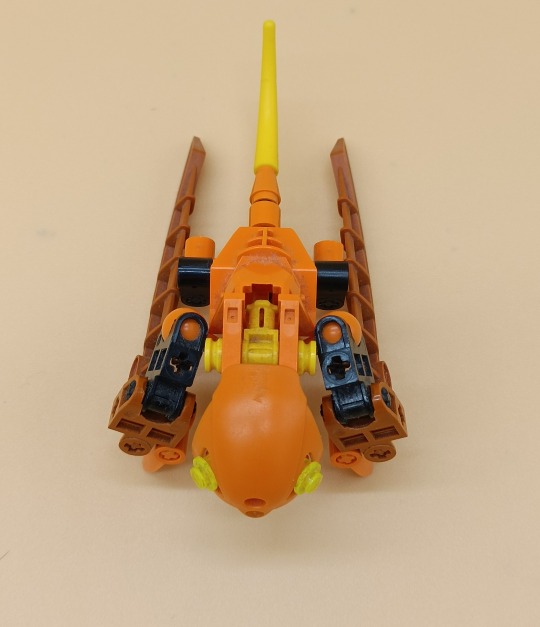
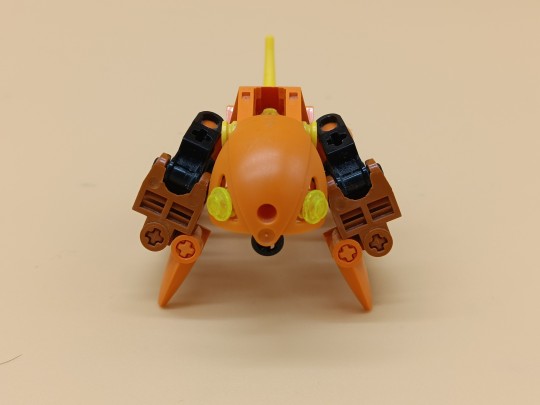
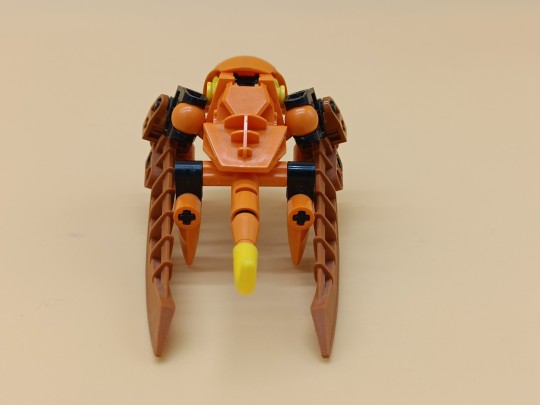

Although not real avians they are sometimes referred to as "Ferina birds" due to their supposed resemblance to the armor of a mysterious toa of the same name, whose legend is well known amongst the inhabitants of the forest, despite its authenticity being dubious at best
210 notes
·
View notes